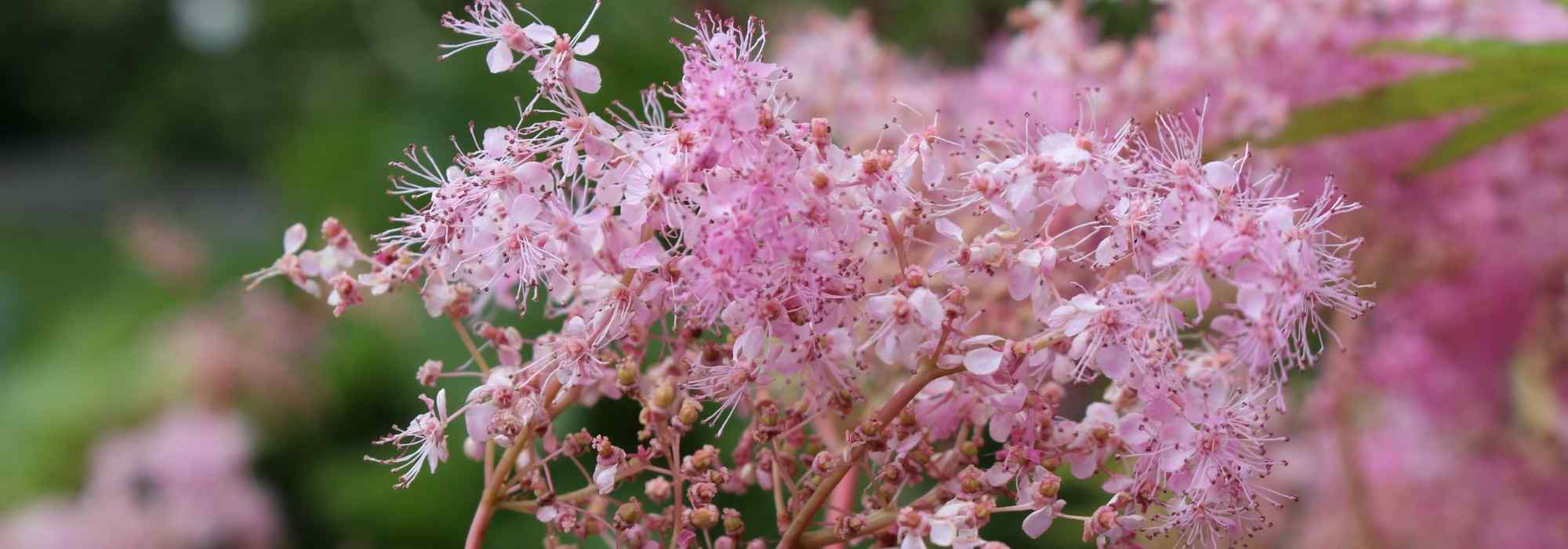
Pink flowered Filipendulas: 6 varieties to discover
Spectacular or compact
Contents
The Filipendulas (Meadowsweet) are beautiful perennials with airy summer flowering in clusters of white or pink flowers with a subtle almond fragrance. Lush yet light, they give the garden an ethereal and wild presence. They form lovely evanescent bushes, reaching up to 2 m for some varieties. They are remarkable in a woodland setting or for flowering the banks of a pond or in partially shaded borders as they thrive in moist soils.
While the white filipendula is the most common, like Filipendula vulgaris, the pink varieties are equally captivating with their vibrant colours, such as Filipendula rubra ‘Venusta’. They bring a great deal of charm, whimsy, and romance to the garden.
From pastel pink to fuchsia, discover our selection of pink-flowered filipendulas, as beautiful as they are bright!
Filipendula ulmaria 'Rosea': the romantic and airy
Here is the pink-flowered form of the wild species, Filipendula ulmaria, which comes in numerous cultivars. Particularly romantic and feathery, Filipendula ulmaria ‘Rosea’ produces graceful small light pink and single flowers from June to August, lightly scented, gathered in feathery corymbs. This meadowsweet develops bright foliage of a rich green, with a crinkled surface that beautifully reflects the light.
It forms a very elegant upright clump of about 60 cm in all directions, making it a medium-sized plant, well suited to small gardens. It will also thrive near a pond or marsh, and in borders where it will bring a lot of lightness and a pastel touch.
Place it at the back of small hardy geraniums and a carpet of heucheras, and among astilbes and willowherbs with cool tones. It also pairs very well with white varieties such as Filipendula ‘Plena’.
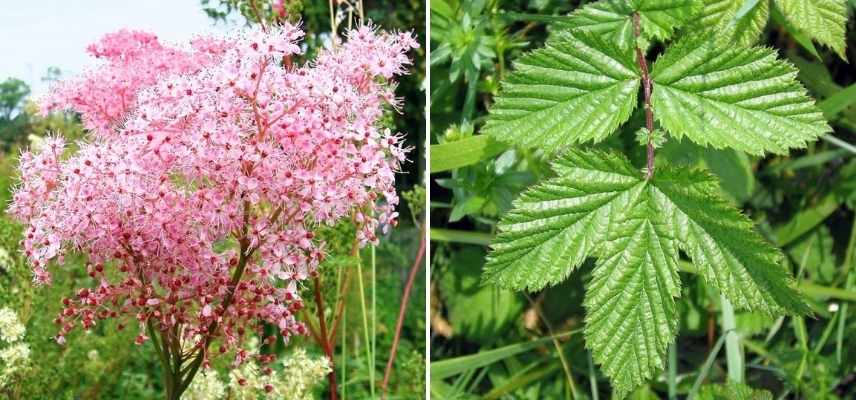
Filipendula ulmaria ‘Rosea’
Filipendula palmata ‘Nana’: the mini model
It’s the declinate palmate meadowsweet in a small specimen! With Filipendula palmata ‘Nana’, delicate flowering occurs from June to August in the form of panicles of deep pink, misty flowers. Its dark green, glossy foliage is characteristic of the species, featuring large palmate leaves.
At 40 cm high and 40 cm wide, it has smaller dimensions than its relatives, making it an ideal meadowsweet for a small garden or for pot cultivation on a shaded terrace or balcony. In this case, even more than in open ground, the meadowsweet will need plenty of water. It is essential to water very regularly, ensuring the substrate never dries out.
Its small size allows for easy pairing with many other perennials, such as the Persicaria Pink Elephant, for example.
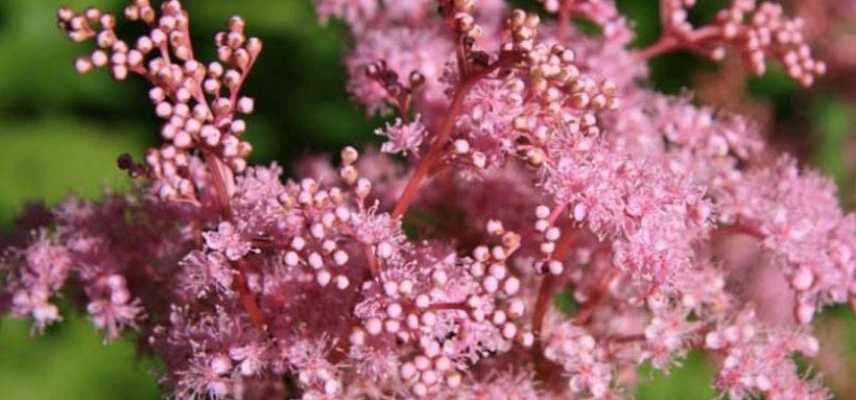
Filipendula plamata ‘Nana’
Discover other Filipendula
View all →Available in 0 sizes
Available in 0 sizes
Available in 0 sizes
Available in 0 sizes
Available in 3 sizes
Available in 0 sizes
Available in 0 sizes
Available in 1 sizes
Available in 2 sizes
Available in 1 sizes
Filipendula purpurea: a stunning flowering!
Here is a meadowsweet that knows how to stand out with its vibrant flowering! From June to July, Filipendula purpurea or purple meadowsweet displays its corymbs of bright fuchsia pink flowers, measuring 10 to 15 cm in diameter.
Reaching heights of 60-70 cm above a large, lushly dissected foliage, they will make a statement at the edge of a pond or in a cool wild garden alongside beardtongues and eupatoriums, other perennials of wet banks.
Like all meadowsweets, it thrives in rich, fresh to moist soil where it will be opulent and floriferous. A cool soil will allow it to grow vigorously.
In a pink symphony, pair it with Persicaria affinis ‘Kabouter’, an extremely floriferous and colourful variety with flowers transitioning from white-pink to deep red.
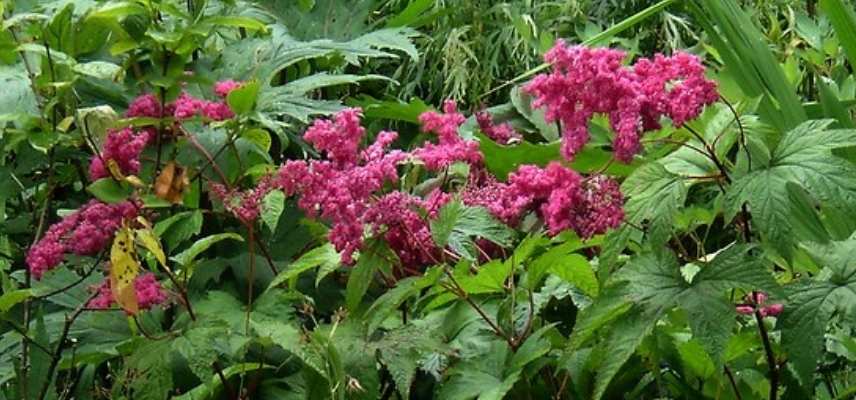
Filipendula purpurea (© Peganum)
Read also
12 perennials for heavy, wet soilFilipendula purpurea ‘Elegans’: a very fresh colour
One could say that purple filipendula has produced some noteworthy cultivars! Filipendula purpurea ‘Elegans’ offers a long and abundant flowering from the beginning of summer. It blooms feathery corymbs of intensely pink flowers that stand out beautifully against finely dissected light green foliage. This cultivar, reaching no more than 70 cm in height at ripeness, is interesting for small gardens.
It creates an elegantly coloured mist, perfect for adding a sense of space to small beds and borders when space is limited in the garden. In a large garden, this variety is stunning when planted en masse in a woodland area or at the edge of a pond alongside the giant Filipendula camtschatica, Lythrum salicaria, or Astilbes.
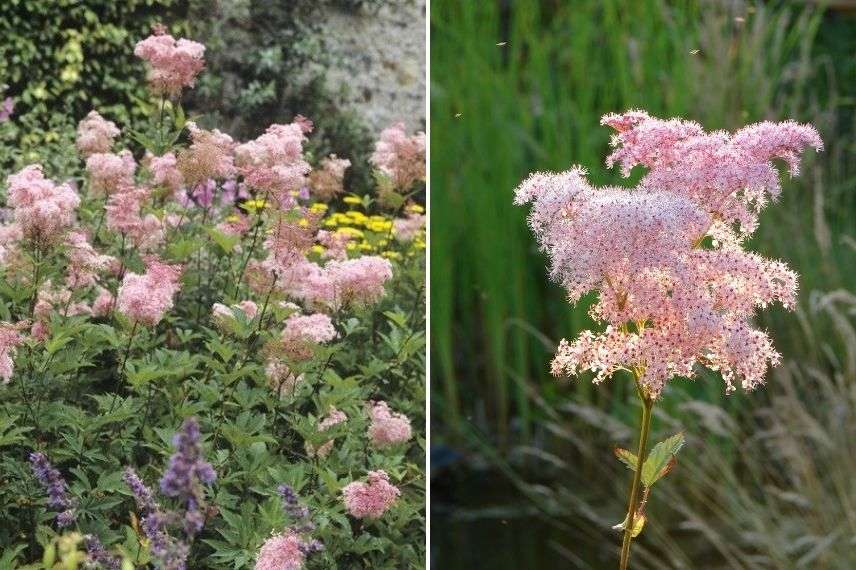
Filipendula purpurea ‘Elegans’
Filipendula rubra ‘Venusta’: The Candy Pink Touch
A spectacular great Meadowsweet! Filipendula rubra ‘Venusta’ is among the most impressive filipendulas. This opulent variety of red filipendula enchants us with its extraordinary flowering plumes in candy pink that reach nearly 2 metres in height when in bloom. The flowering occurs as early as June and continues throughout the summer. It is a plant full of lushness and lightness.
In a wild garden at the back of a border, its airy corymbs in intense and fresh colours will bring a lovely vibrancy. Planted in groups, it will quickly become a focal point alongside Purple Joe-Pye Weed, Chinese Loosestrife, or pigamons.
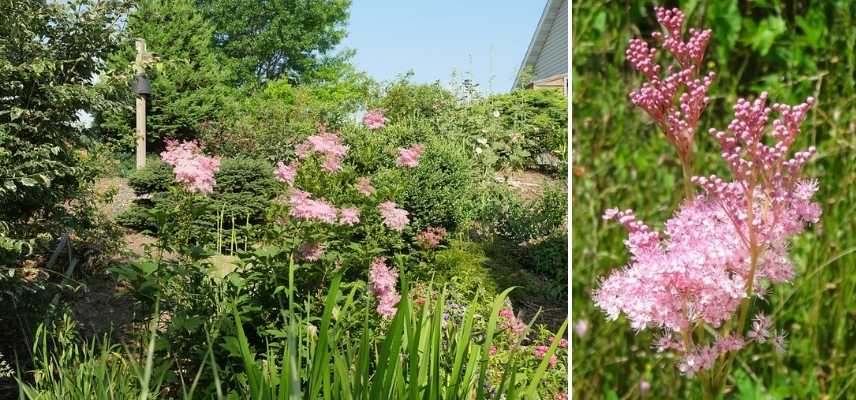
Filipendula rubra ‘Venusta’, at the back of a border (© FD Richards), with a close-up of the inflorescence on the right
Filipendula vulgaris 'Kahome': beautiful and compact
Filipendula ‘Kahome’ joins the tribe of meadowsweet with modest dimensions. This dwarf and compact form of Filipendula vulgaris features delicate, airy, bright pink inflorescences throughout the summer that resemble those of spireas. It reaches a height of no more than 40 cm and a width of 30 cm, making it ideal for small spaces and borders.
This species proves to be more tolerant of dry soils.
Airy and with its fruity colour, it fits perfectly into a romantic-style garden, at the edge of a damp bed where you can pair it with other moisture-loving plants in pink tones, such as hardy geraniums or knotweeds.
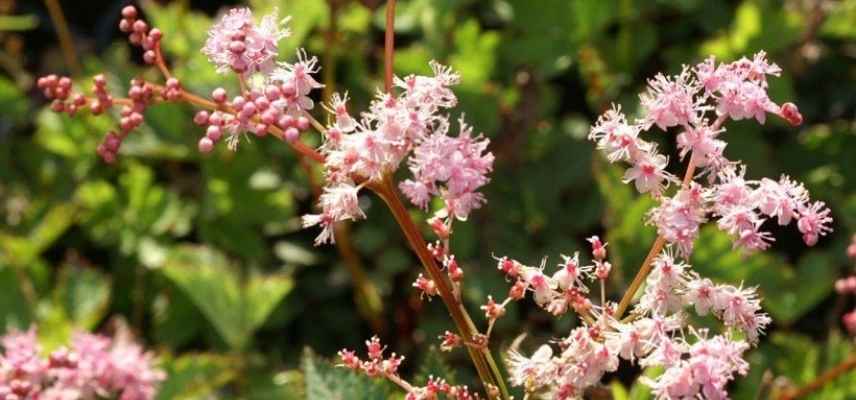
Filipendula ‘Kahome’
For further reading
- Find all our Filipendula varieties
- Discover everything you need to know with our complete guide on Filipendula
- Subscribe!
- Contents
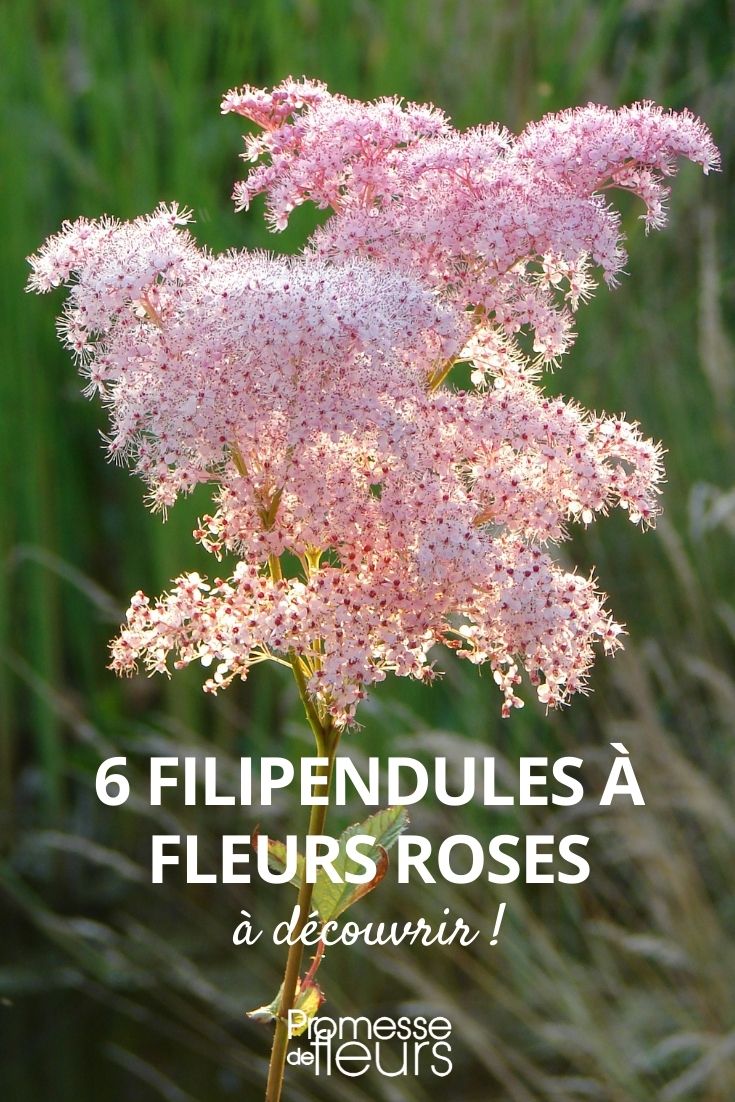































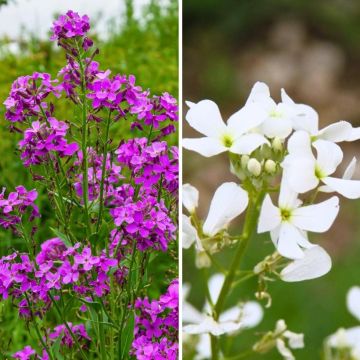
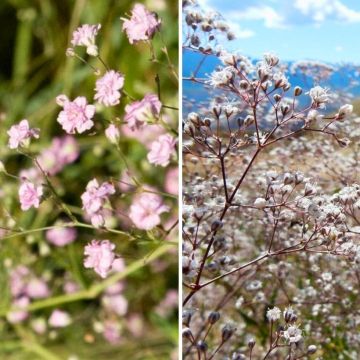
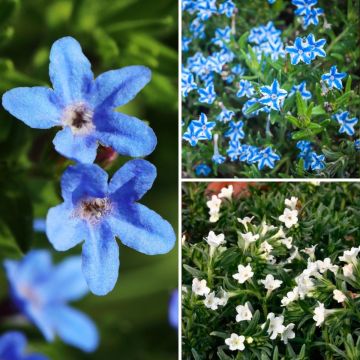
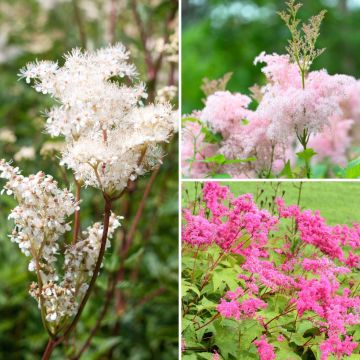
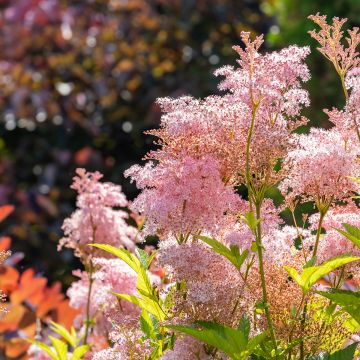
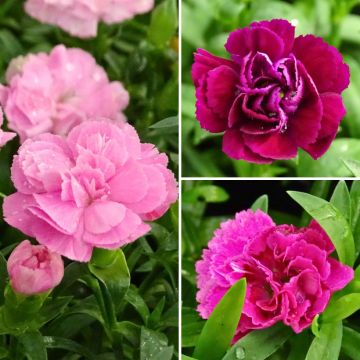
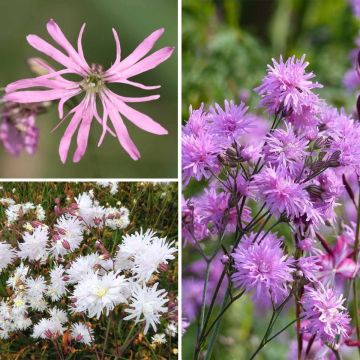
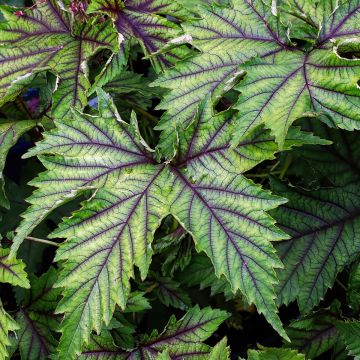
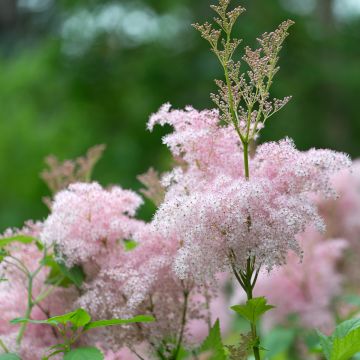
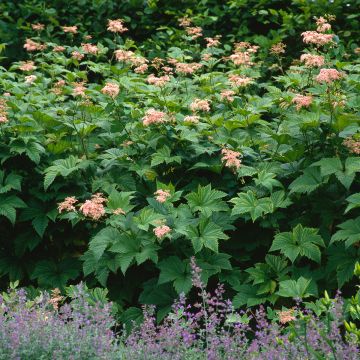
Comments